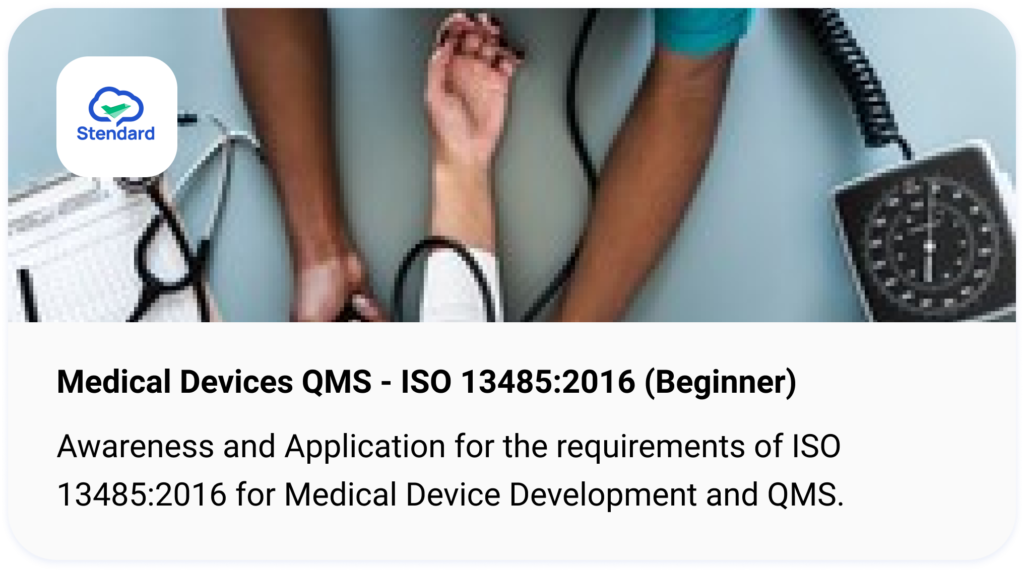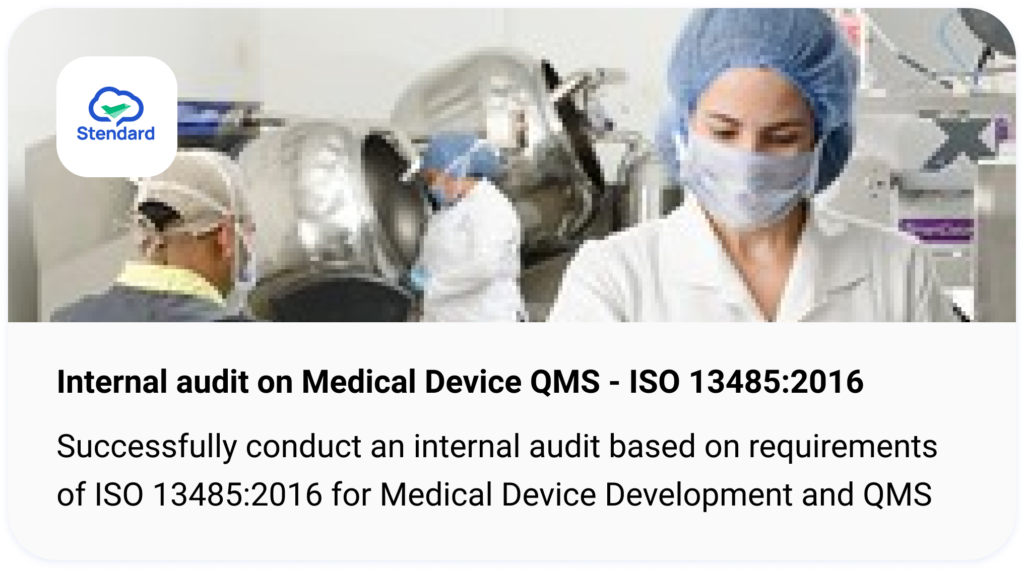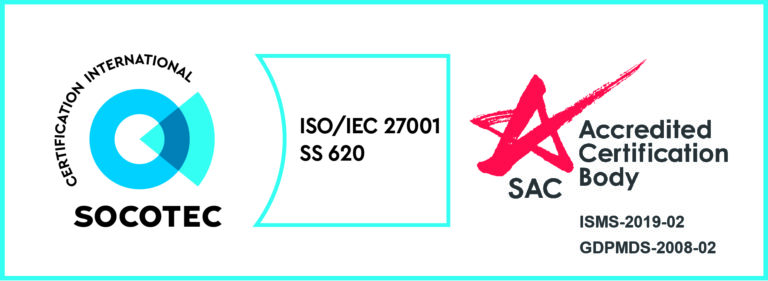This is a guest post by Dr. Michael Rinck of MT Promedt Consulting GmbH from Germany, a partner of Stendard.
Part 5 of our 6-part series highlights the additional responsibilities for all economic operators of Medical Devices in the EU, due to Post-Market Surveillance.
The new MDR (EU) 2017/745 is poses a huge challenge, not only due to the preparation of the technical documentation, as we shared in our last post. Another major challenge is the handling of the Post-Market Surveillance (PMS) system. This PMS system will impact all economic operators, not only the manufacturers. Let us look into the details.
What is Post-Market Surveillance?
The PMS system is part of the Quality Management System ( Art.10. 9(i) ) of the manufacturer. It describes a regular proactive and systematic process to collect information on the quality, safety and performance of the concerned devices on the market, and if applicable, to identify necessary corrective and preventive action (CAPA). The relevant requirements can be found in MDR (EU) 2017/45 Art. 83 ff and Annex III. It is important to understand that this is a requirement applicable to all manufacturers including class I medical device / class A IVD device manufacturers.
The MDR (EU) 2017/45 defines PMS as following (Art. 2 (60)):
post-market surveillance means all activities carried out by manufacturers in cooperation with other economic operators to institute and keep up to date a systematic procedure to proactively collect and review experience gained from devices they place on the market, make available on the market or put into service for the purpose of identifying any need to immediately apply any necessary corrective or preventive actions.
All PMS activities will result in an analysis of relevant data on the quality, performance and safety of the concerned device throughout its entire lifetime, which allows all to draw the necessary conclusions and to determine – if necessary – appropriate CAPA actions.
Article 83 MDR (EU) 2017/745 lays down:
For each device, manufacturers shall plan, establish, document, implement, maintain and update a post-market surveillance system in a manner that is proportionate to the risk class and appropriate for the type of device. That system shall be an integral part of the manufacturer’s quality management system referred to in Article 10(9).
The post-market surveillance system shall be suited to actively and systematically gathering, recording and analysing relevant data on the quality, performance and safety of a device throughout its entire lifetime, and to drawing the necessary conclusions and to determining, implementing and monitoring any preventive and corrective actions.
Reading this, it becomes clear that the PMS system is linked to all other major internal documentation systems with specific links to the PMCF (Post-Market Clinical Follow-up). Let us see what this means.
The Post-Market Surveillance plan
The post-market surveillance system requires a post-market surveillance plan (Art. 84). This can be a plan for one product or a product category. The content requirements of the PMS plan are described in Annex III Section 1.1 (Technical Documentation on Post Market Surveillance).
This PMS plan describes procedures to fulfill a manufacturer’s obligations in a PMS system. The PMS plan provides information on how to proactively and systematically collect and evaluate relevant information about the concerned product in a given reporting period. The plan describes inputs such as:
- User feedback and complaints
- Serious incidents, Field Safety Corrective Action (FSCA), Periodic Safety Update Report (PSUR)
- Non-serious incidents with related side effects
- Trend reports
- Review in literature data bases and registries
It also requires manufacturers to address publicly available information about similar devices available on the market.
This information and its evaluation shall enable manufacturers to assess the status of the quality, performance and safety of the concerned device in the market. If necessary, PMS activities will allow for identification of the need for CAPAs, FSCA, product improvements (eg. on usability, performance and safety of the devices), improvements even for other devices in the manufacturer’s portfolio, as well as trends.
The PMS plan also refers to effective and appropriate methods and processes for the assessment of the collected data as well as the development and definition of internal product-specific indicators and threshold values for a continuous assessment of the risk-benefit ratio of the devices.
The PMS plan needs to be linked to the complaint management and CAPA system as this requires effective and appropriate methods and tools to investigate these complaints. Should the assessment result in the identification of any serious incidents, a vigilance report is required (Art. 87). The general link to the vigilance reporting system and the aspects of and effective communication with competent authorities, notified bodies, economic operators and users should be described in the PMS plan. Even more the PMS plan needs to describe effective tools to trace and identify devices for which corrective actions might be necessary.
The Vigilance System requires also the reporting of trends. This requirement has already been part of the MEDDEV 2.7.1 rev.4 but was not considered by most of the manufacturers.
MDR now requires to define a process to “…detect any statistically significant increase in the frequency or severity of non-serious incidents or expected undesirable side effects…”. It is expected that notified bodies or competent authorities will review these processes, which must be described in the quality management system.
Manufacturers are facing the problem to define the information flow regarding non serious incidents or expected undesirable side effects from the market, as this data is usually under the reporting threshold limit. We highly recommend to set up a suitable process in close cooperation with your distributors and importers and define a proactive way to access this data, e.g. through market surveys. The obligations of importers and distributors, as described in Article 13 and Article 14 of MDR (EU) 2017/745, should be taken into account in the context of this PMS process.
The PMS plan also needs to refer to a PMCF plan (Annex XIV part B), or a justification as to why a PMCF is not applicable. PMCF is described together with the Clinical Evaluation in a separate blog.
Reports within the PMS
Based on the risk classification of the concerned devices different reports need to be prepared.
For class I devices a PMS report (Art. 85) summarizes the results and conclusions of the collected data which were analyzed according to the detailed methods and tools described in the PMS plan. The report also describes any CAPA measures taken. This report shall be updated when necessary, which means when CAPA measures were defined.
For Class IIa, IIb and class III devices a Periodic Safety Update Report (PSUR) (Art.86) is required. The PSUR summarizes the results and conclusions of the analyses of the PMS data as well as describes any preventive and corrective actions taken.
Throughout the lifetime of the device concerned, that PSUR shall set out:
(a) the conclusions of the benefit-risk determination;
(b) the main findings of the PMCF; and
(c) the volume of sales of the device and an estimate evaluation of the size and other characteristics of the population using the device and, where practicable, the usage frequency of the device.
Manufacturers of class IIa devices shall update the PSUR when necessary and at least every two years, while in case of class IIb and class III devices the PSUR shall be updated at least annually.
Technical Documentation on Post Market Surveillance
All major documentation of the PMS system are elements of the Technical Documentation on post-market surveillance (Annex III). We recommend to create a “real” Technical Documentation, which is revision controlled and part of the document control system. Annex III requires “the Technical Documentation on post market surveillance to be drawn up by the manufacturer shall be presented in a clear, organised, readily searchable and unambiguous manner” The elements of the Technical Documentation on Post market surveillance are:
- PMS Plan
- PMS Report
- PSUR
The PMS system needs to be described in detail in the QMS system. Make sure that this system is operational latest at the date of the transition 26 May 2020.




